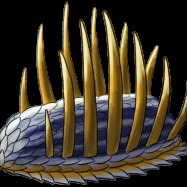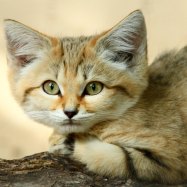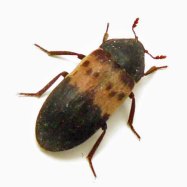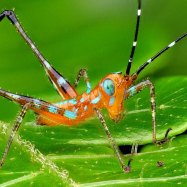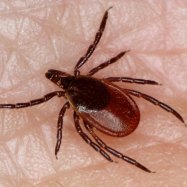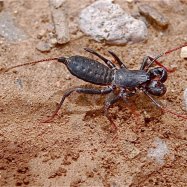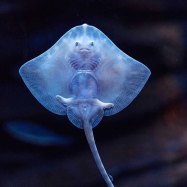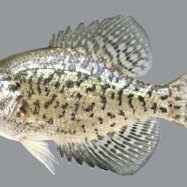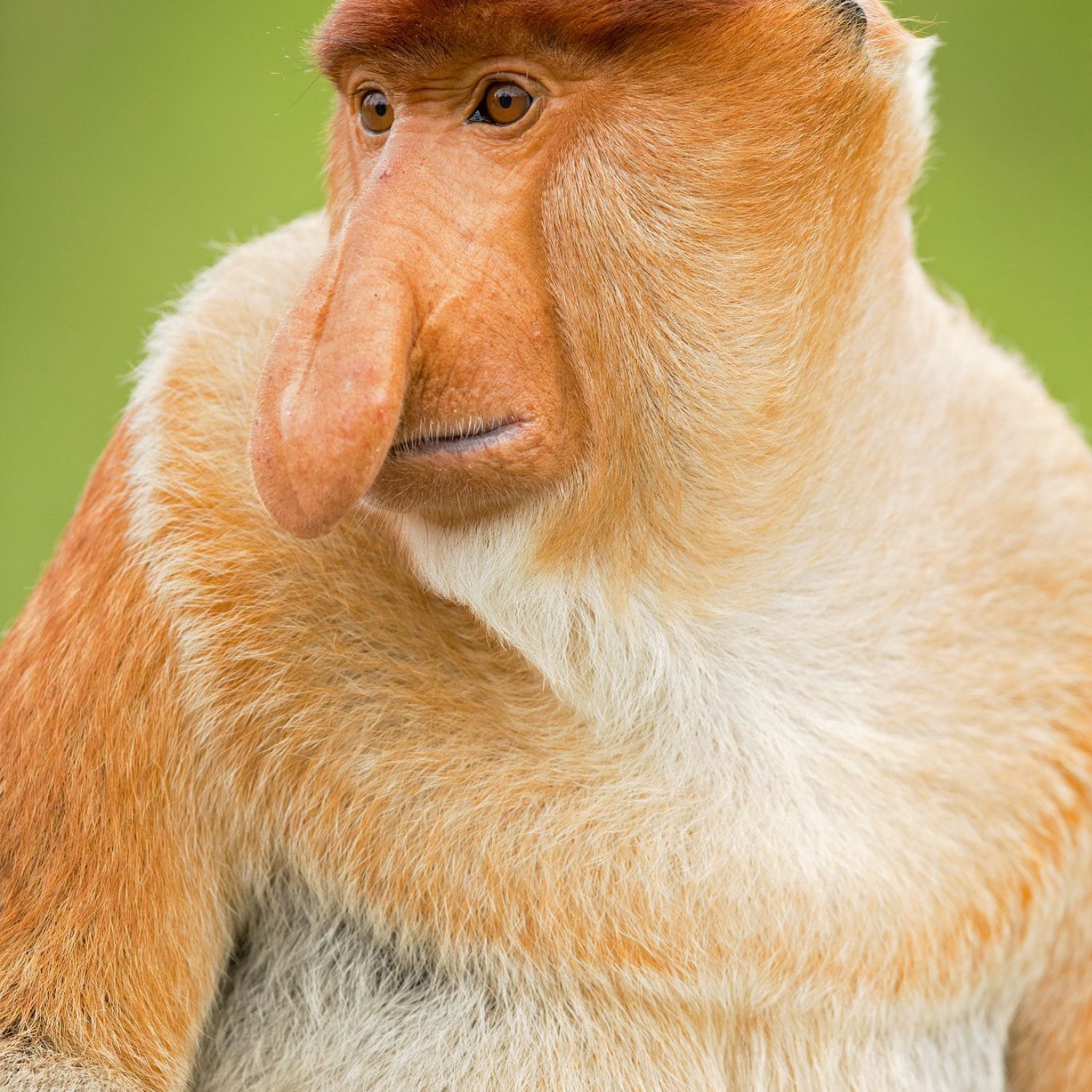
Proboscis Monkey
Male: 66-72 cm, Female: 53-62 cm
The Proboscis Monkey, found in Southeast Asia, is known for its unique nose and large, stocky body shape. The males can grow up to 66-72 cm in length while females range from 53-62 cm. Belonging to the Cercopithecidae family, these monkeys are great swimmers and can often be seen jumping from tree to tree in their natural habitat.
Animal Details Summary:
Common Name: Proboscis Monkey
Kingdom: Animalia
Habitat: Mangroves, swamps, and lowland rainforests
The Fascinating World of the Proboscis Monkey
The Proboscis Monkey, also known as the Monyet Belanda (Dutch Monkey) by locals in Indonesia and Malaysia, is truly a one-of-a-kind primate. With its distinctive large nose, potbelly, and reddish-brown coat, this species has captured the fascination of animal lovers and researchers alike. In this article, we will delve into the wonderful world of the Proboscis Monkey and learn more about its unique characteristics, behavior, and conservation status.A Unique Primate
The scientific name for Proboscis Monkey is Nasalis larvatus, derived from the Latin word "nasus" meaning "nose" and "larvatus" meaning "masked" Proboscis Monkey. The name perfectly describes the dominant feature of this primate – its distinctively large nose. The nose of the male Proboscis Monkey can grow up to 7 inches, giving them a comical and almost human-like appearance.But why do they have such huge noses? Scientists believe that the nose serves as a way for these monkeys to attract females. The bigger the nose, the more attractive the male is to potential mates. Interestingly, the nose of the female Proboscis Monkey is much smaller, and their behavior may be the reason for this difference. Males often engage in loud calls and other forms of vocal communication, while females tend to be quieter.
A Home in the Mangroves
The Proboscis Monkeys are native to the island of Borneo, which is shared by Indonesia, Malaysia, and Brunei. Within this island, they can be found in the coastal area and mangrove forests lining the rivers and estuaries. They have also been spotted in swamps and lowland rainforests Phytosaurs. These monkeys are excellent swimmers and have webbed feet that allow them to easily move through the water in search of food.The mangroves and swamps provide these primates with a rich source of food, including leaves, seeds, and fruits. Proboscis Monkeys are herbivorous and primarily feed on young leaves and unripe fruits, supplementing their diet with seeds and flowers. They have a unique digestive system which allows them to digest toxic compounds found in leaves, making them important seed dispersers in their habitats.
A Complex Social Structure
Proboscis Monkeys live in large groups called harems, consisting of one dominant male, several females, and their offspring. These groups can range from 10 to 32 individuals, with multiple harems sometimes living in the same area. The females in these groups are often related and share a strong bond. The males, on the other hand, must compete for leadership through aggressive displays and vocalizations.Within the group, each member has a specific role to play. Females are responsible for caring for the young, while males protect the group from predators. As with many primate species, Proboscis Monkeys exhibit complex social behaviors. They are often observed grooming each other, which helps them form and maintain relationships within the group.
A Unique Appearance
One look at a Proboscis Monkey, and you'll know they are truly unique. Apart from their large noses, they also have distinct reddish-brown coats, with a yellowish-white underside. The large stomach or potbelly is another distinctive feature of these primates, which is often attributed to their high-fiber diet.In terms of size, male Proboscis Monkeys are much larger than females. Males can grow up to 72 cm in length and weigh between 16-22 kg, while females are smaller, measuring about 62 cm in length and weighing 7.5-12 kg. Their long tails, measuring up to 75 cm, act as a balancing tool when they move through the trees.
Threats and Conservation Efforts
The Proboscis Monkey is currently listed as an endangered species by the International Union for Conservation of Nature (IUCN). The primary threat to their survival is habitat loss, as the mangrove forests and swamps are being cleared for human development. Palm oil plantations, logging, and mining also contribute to the destruction of their habitats.Furthermore, the Proboscis Monkey's unique appearance has made them a target for the illegal wildlife trade. They are often captured for their meat or as pets, with many being sold on the black market. Such activities have a severe impact on their population, as they have a slow reproduction rate with females only giving birth every 20 months.
To address these issues, conservation efforts are being made by various organizations and governments to protect the Proboscis Monkey. For example, the Sabah Wildlife Department in Malaysia has implemented a Proboscis Monkey Conservation Project that focuses on research, education, and rehabilitation for these primates. In addition, ecotourism initiatives that promote responsible and sustainable tourism have also been established, providing alternative livelihoods for local communities while protecting the monkeys.
Conclusion
In conclusion, the Proboscis Monkey is a fascinating primate that has captured the hearts and minds of many. Their unique appearance, complex social behavior, and critical role in their ecosystem make them a valuable species worthy of conservation efforts. As we continue to learn more about these primates, let us also do our part in protecting their habitats and ensuring their survival for future generations to appreciate.

Proboscis Monkey
Animal Details Proboscis Monkey - Scientific Name: Nasalis larvatus
- Category: Animals P
- Scientific Name: Nasalis larvatus
- Common Name: Proboscis Monkey
- Kingdom: Animalia
- Phylum: Chordata
- Class: Mammalia
- Order: Primates
- Family: Cercopithecidae
- Habitat: Mangroves, swamps, and lowland rainforests
- Feeding Method: Herbivorous
- Geographical Distribution: Borneo
- Country of Origin: Indonesia, Malaysia
- Location: Southeast Asia
- Animal Coloration: Reddish-brown with a yellowish-white underside
- Body Shape: Large and stocky with a potbelly
- Length: Male: 66-72 cm, Female: 53-62 cm
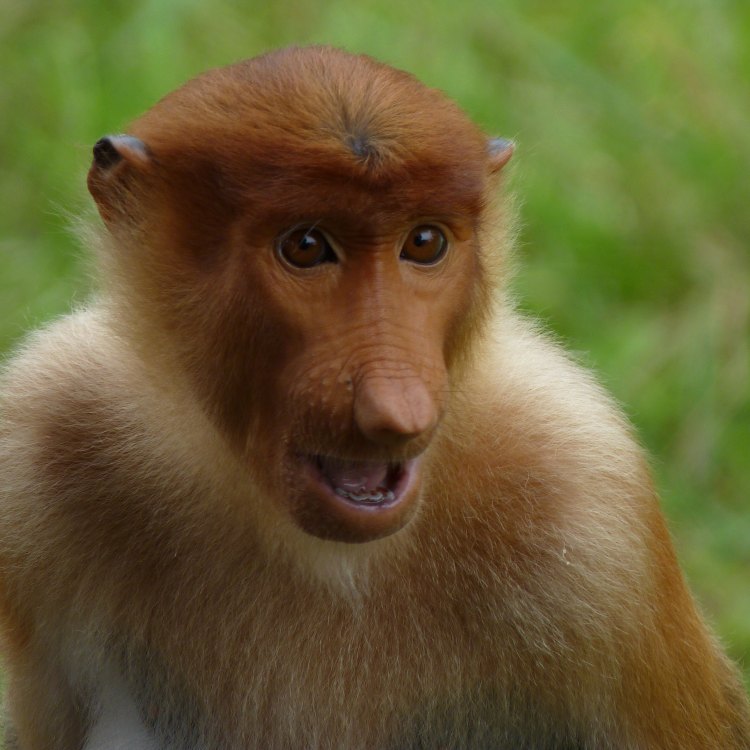
Proboscis Monkey
- Adult Size: Male: 66-74 cm, Female: 52-62 cm
- Average Lifespan: 20-25 years
- Reproduction: Sexual
- Reproductive Behavior: Polygynous
- Sound or Call: Loud, honking calls
- Migration Pattern: Non-migratory
- Social Groups: Large groups called harems
- Behavior: Semi-arboreal and primarily diurnal
- Threats: Habitat loss and hunting
- Conservation Status: Endangered
- Impact on Ecosystem: Seed dispersal
- Human Use: Tourist attraction
- Distinctive Features: Long and pendulous nose, large belly, webbed feet
- Interesting Facts: Proboscis monkeys are known for their large, bulbous noses, which are more prominent in males
- Predator: Carnivorous mammals such as crocodiles and large cats
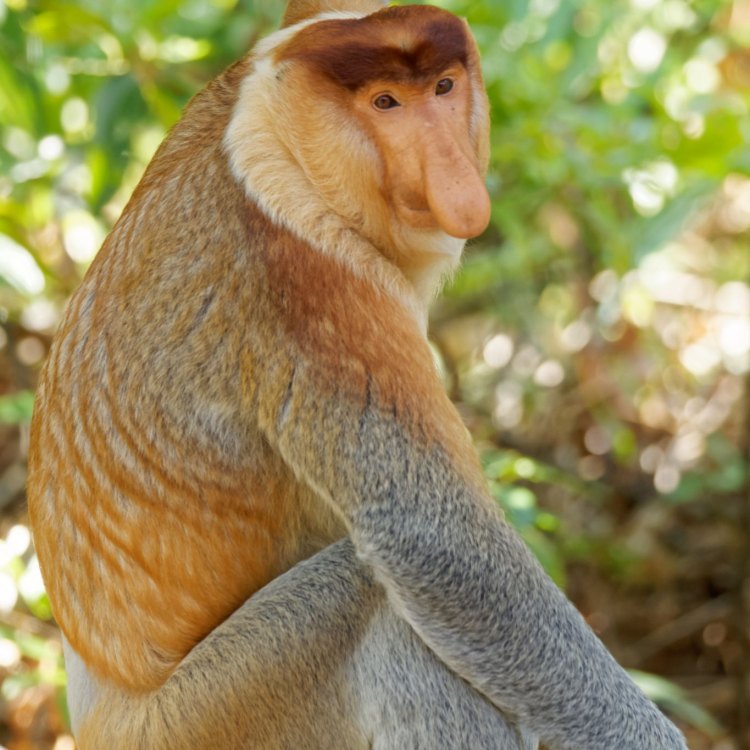
Nasalis larvatus
The Unique Features of the Proboscis Monkey: A Fascinating Endangered Species
The proboscis monkey, also known as the long-nosed monkey or the bekantan, is a fascinating and unique species found predominantly in the rainforests of Borneo. It is known for its distinctive facial structure, with a long, pendulous nose that has earned it its name. But this remarkable monkey has much more than just its nose to offer. Let's take a closer look at the proboscis monkey and explore its distinctive features, behavior, threats, and its significance in the ecosystem PeaceOfAnimals.Com.Physical Characteristics
The proboscis monkey is a relatively large primate, with males being significantly larger than females. On average, males can grow up to 66-74 cm, while females reach lengths of about 52-62 cm. They can weigh anywhere between 12-24 kg, making them one of the largest monkey species in the world.
One of the most distinctive features of the proboscis monkey is its long, pendulous nose, which is more prominent in males. Theories suggest that the enlarged nose acts as a resonating chamber for their loud and honking calls, which can be heard up to 1.2 km away. It also plays a crucial role in attracting female mates, with the size and length of the nose being a sign of strength and dominance in males.
The proboscis monkey also has large bellies, giving them a pot-bellied appearance. This is due to their unique digestive system, which helps them digest the toxic leaves they consume Plott Hounds. They also have webbed feet, which allows them to swim quickly and efficiently, making it easier for them to escape predators.
Behavior and Reproduction
Proboscis monkeys are semi-arboreal, meaning they spend equal amounts of time on the ground and in trees. They are also primarily diurnal, being most active during the day and resting at night. They are excellent climbers and are known to jump between trees with ease.
Proboscis monkeys are social animals, living in groups called harems. These groups consist of one dominant male, several females, and their offspring. They are polygynous, with the male having several female mates. The dominant male also defends the group from potential threats and other male contenders.
When it comes to reproduction, proboscis monkeys are sexual, with females giving birth every two to three years. The gestation period lasts for about five and a half months, and females typically give birth to one offspring at a time. The young monkeys are dependent on their mothers for the first year of life, after which they start to become more independent.
Threats and Conservation Status
Sadly, the proboscis monkey is currently classified as an endangered species, with its population declining rapidly due to various human activities. One of the biggest threats to their survival is habitat loss. Deforestation and the expansion of palm oil plantations have led to the destruction of their natural habitats, leaving them with limited resources.
Another major threat to the proboscis monkey is hunting. Despite being protected by law, these monkeys are often hunted for their meat, which is considered a delicacy in some areas. They are also captured and sold in the illegal pet trade, further contributing to their decline in numbers.
Impact on the Ecosystem
The proboscis monkey plays a crucial role in the ecosystem of Borneo, especially in the dispersal of seeds. As their diet consists mainly of fruits, they help spread seeds to different locations, aiding in the growth and diversity of plant life in the rainforest. Without proboscis monkeys, there is a danger of a decrease in plant diversity, which could negatively impact other species in the ecosystem.
Human Use and Interesting Facts
Due to their unique appearance and behavior, proboscis monkeys have become a popular tourist attraction in Borneo. Many visitors come to see them in their natural habitat, enabling local communities to benefit from ecotourism. However, excessive tourism can also pose a threat to the monkeys' habitats, so it is essential to practice responsible and sustainable tourism.
Apart from their long noses and distinctive calls, proboscis monkeys have some other interesting facts about them. For instance, they are one of the few mammals with an enlarged stomach that is divided into four chambers to aid digestion. They are also excellent swimmers, able to hold their breath for up to six minutes and swim for long distances.
Predators
In the wild, proboscis monkeys have a few natural predators, mainly carnivorous mammals such as crocodiles and large cats like the clouded leopard. However, their most significant threat remains human activities, mainly hunting and habitat destruction.
In conclusion, the proboscis monkey is a unique and fascinating species that has captured the hearts of many people worldwide. Sadly, due to numerous human activities, their numbers are dwindling, and their survival is at risk. It is crucial to raise awareness and take action to protect these incredible creatures and preserve their natural habitats. After all, the proboscis monkey is not only a significant part of Borneo's ecosystem, but it also adds diversity and wonder to our world.
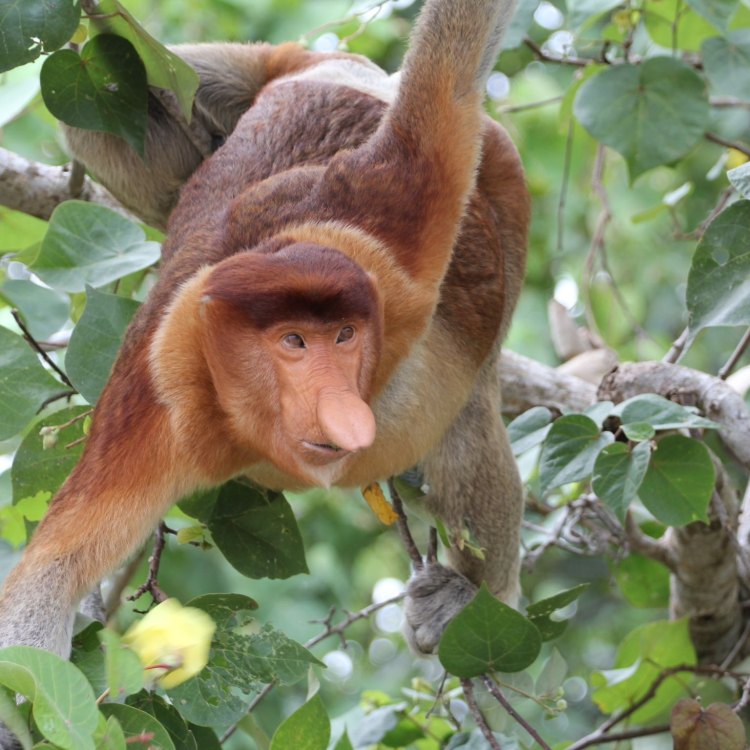
The Fascinating World of the Proboscis Monkey
Disclaimer: The content provided is for informational purposes only. We cannot guarantee the accuracy of the information on this page 100%. All information provided here may change without prior notice.

